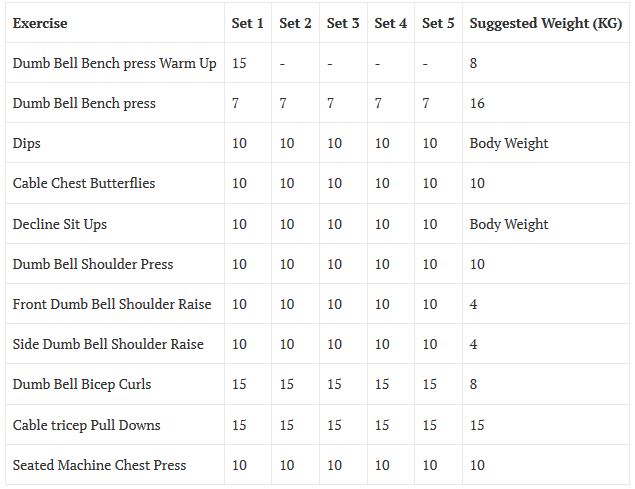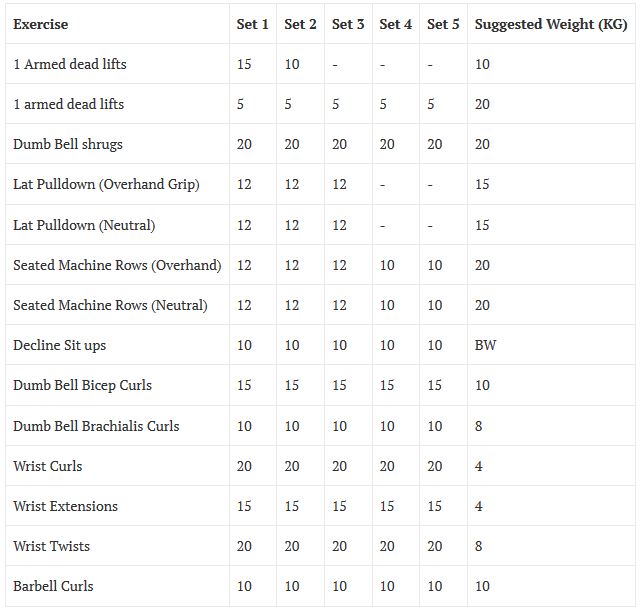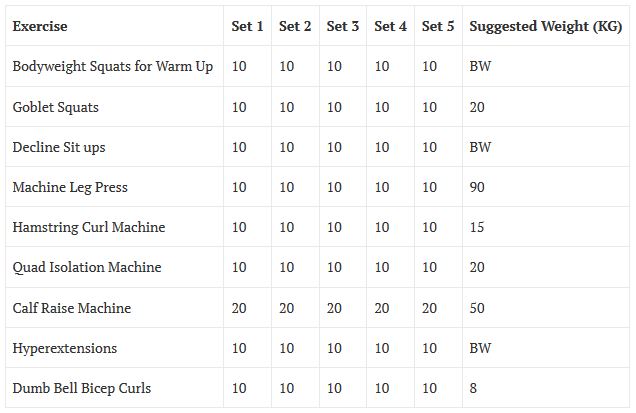Written by: XEONIQ [ Instagram | Tumblr ]
Edited by: DETALEX [ Instagram ]
I have been involved in sport and weight training since I was a child. As I have gotten older my emphasis has shifted from maximising my strength to sustainable maintenance. Over the years I’ve been using social media I have had numerous requests to see my fitness routine; a basic lifting routine was created and distributed around a handful of communities. I felt there would be value in elaborating on that information in the form of a guide, especially for those interested in starting to care for their bodies or who wanted to increase their strength and muscle mass.

This guide will be brief and is directed at those who have limited training experience. There may be better methods for you. For those already embracing regular exercise in your lifestyle, this guide is most likely redundant. I do not believe there is any universal routine that will work for everyone. However, we all have to start somewhere and the vast majority of information online is heavily compromised by commercial interests. YouTube Vloggers want to sell supplements, training equipment or custom routines and e-mail “coaching” packages. Blogs are almost all supported by affiliate sale vendors. In order to maintain relevant these entities produce “click bait” content professing their new method for doing a certain exercise is “the best ever”, and promoting the brands that advertise with them as “game changers”. The average person these days is wary of such commercial agendas and it is a very real issue affecting the quality of information online for those just starting out.
In keeping with the consumer-focused, 21st century theme of Shell Zine, I’ll be prefacing this with a few assumptions:
- The vast majority of people reading this will
live sedentary lifestyles dominated by time in front of a screen. - We want to feel good, be healthy and if possible
look better as well by reducing fat and increasing muscle mass. - We have limited time, resources and energy, so
there is value in finding a system which is cost effective, convenient and
helps us realise our goals faster.
Based on those assumptions, this is my argument as to why training in a gym using a hypertrophy routine makes a lot of sense for most people compared to other alternatives:
- Safety – Training outside exposes you to damaging UV during the day, automobile threats at night if running along the road, and uneven terrain that can result in falls. Training off random bars and structures can result in sprains, slips and cuts. Training in the gym provides a clean environment using equipment that when properly used is extremely safe to use. The goal is not only to train hard, but to do it sustainably thereby minimising injuries. Heavy powerlifting routines can result in serious debilitating injuries and new lifters who are training on their own are at a significant risk of using the wrong form when starting out.
- Comfort – Sports and outdoor training are often a great deal more fun and I encourage everyone to participate in these if time and availability allow, however, many sports are seasonal and the climate in many areas may vary from extreme heat waves to typhoons to snow storms. This means that very few of these activities will be available year round and you need an outlet to exercise consistently week in and week out. Thus, because we are so sedentary, most people will want to train in the gym for health reasons even if it is just to supplement sporting pursuits.
- Time efficiency – High intensity, hypertrophy weight training burns a lot of calories very fast and if your training is implemented correctly will stress both your entire musculoskeletal and central nervous systems holistically. You will struggle to consistently build habits that will result in this level of resistance training using other methods.
- Motivation – At the average 24-hour gym that is popular these days, there is not much in the way of facilities to distract you from your primary task at hand: lifting weights and/or engaging in cardiovascular exercise. While you could train in a home gym, and many do successfully, when starting out motivation can be a key issue preventing the formation of regular training habits. Paying for access to a commercial gym, a place where all you can do is exercise, may provide the impetus you need to continually work out until it becomes a habit.
Some Thoughts on Diet and Nutrition
Prescribing a diet that would work for most people, let alone all beginner lifters, would be a futile exercise. Food choices are heavily determined by cultural norms, practical availability and convenience. If you are attempting to build muscle mass you will need significantly more calories than your body typically needs and roughly 100 grams of protein a day. If you are attempting to lose fat you want to restrict your calories as much as you can sustain while keeping protein intake as high as possible. In both cases, you want to avoid refined sugars and “junk food”. There are numerous calorie counting apps, nutritional guides and Total Daily Energy Expenditure (TDEE) calculators available. I will provide a few dot points here of nutritional information that may be of use:
- Protein powders are an inexpensive and convenient way to increase your protein consumption. Avoid “mass gainer” formulas and stick to what is cheap. There are plenty of vegan and milk based protein powders available, buy what is affordable to you and don’t be influenced by branding or additives. You just need cheap protein to supplement your meals. There are no other supplements that you need to gain or lose weight. Do not be swayed by marketing advertisements attempting to sell you convenient placebos.
- Cooked meats (beef, lamb and pork) and especially cooked processed meats (hot dogs, meat pies, etc) are carcinogenic (World Health Organisation) and should be consumed sparingly as treats and not make up the bulk of your regular intake. Consider chicken, turkey, fish, seafood, nuts, eggs, mushrooms, beans, and other sources of protein for your regular meals instead.
- Choose complex carbohydrate sources like brown rice and wholegrain products over simple carbs like white rice and white bread. They contain more fibre and digest slower, giving you a steady stream of energy instead of a quick burst followed by a crash.
- Drink plenty of fresh water. Insufficient hydration can cause renal diseases, especially on a high protein diet.
- Avoid refined sugars, processed food from packets and fast food (McDonalds). Again these should only be consumed as treats if at all, not be a regular part of your diet.
- Avoid drinking soda, energy drinks, such as Red Bull, and heavily processed juices regularly as part of your diet. Try unsweetened teas if you get bored of plain water.
- Fasting is a healthy, convenient and cost effective way to lose fat. Fasts can be intermittent (18 hours a day without caloric intake) or extended, based on what you find comfortable.
The Routine
The following spread sheet represents my typical training routine. It is based on a Push, Pull, Legs (PPL) bodybuilding split system. You may do this routine for three to six days a week. It is designed to work complementary core and accessory muscle groups in a session, allowing these muscles to rest while you train the next group on the following lifting day. The following guide is a high volume routine. The goal is to force a large volume of blood into your muscles while you do these exercises, causing swelling and micro-tissue damage. This damage will heal over time, increasing muscle tissue size. This requires increased protein consumption, good hydration and adequate sleep of at least eight hours a night.
The listed weights are just suggestions for beginners, please adjust them to the point that you can complete all sets at the reps indicated while still exhausting your muscles by the exercise.
Beginner Tips:
- A rep is one repetition of an exercise from positive to negative motion
- A set is one uninterrupted series of reps
- In the guide below there will be five sets for each exercise with the given number of reps to be done in that set in each column. If you are unsure how to perform an exercise, simply check your preferred search engine and there will be a variety of videos and image diagrams to assist you.
Push Day (Chest, Triceps, Shoulders)

Pull Day (Back, Biceps, Lats, Forearms)

Leg Day (Quads, Calves, Glutes, Hamstrings)

If you enjoyed this article, supporting SHELLZINE by any amount can be made via the link below. Your contribution is completely optional and all funds help cover the website’s growing hosting costs and enable further original content creation without the use of advertisements. Secure payments by all major card types, including Google Pay and Apple Pay, are supported.

